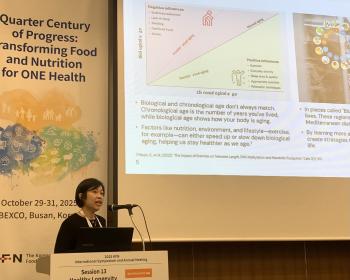Addiction accident again...The pufferfish, the tetrodotoxin, is so strong
Jun 30, 2025
|
According to the Busan Fire and Disaster Headquarters, four people, including A in his 50s, who ate a pufferfish dish in Gijang-gun, Busan on the afternoon of the 29th, showed symptoms of pufferfish poisoning. They complained of dizziness and were taken to a hospital for treatment.
The Ministry of Food and Drug Safety recommends that chefs with certification in cooking pufferfish should consume cooked pufferfish. According to the Ministry of Food and Drug Safety, there have been a total of 13 cases of pufferfish poisoning in the last 20 years (2005-2024), with 47 patients.
The eggs and intestines of pufferfish contain Tetrodotoxin, a neurotoxin, which causes symptoms such as vomiting and nerve paralysis, and in severe cases, can die.
Tetrodotoxin selectively blocks the natural toxins contained in the gonads of pufferfish, sodium passages on the surface of the cell membrane of nerves and muscles, paralyzing muscles, and the content of pufferfish poisons varies depending on the type and season of the pufferfish. By site, there are many in the ovaries (eggs), liver, skin, and intestines, and there are few in the meat quality. It is a toxic substance, with a minimum lethal dose of 2 mg and a minimum poisoning dose of 0.2 mg in humans. Due to its high heat resistance, it is not destroyed (inactivated) by normal cooking heating, and the presence of colorless, odorless, and tasteless cannot be sensibly detected.
Tetrodotoxin is a typical neurotoxin, and the more severe the symptoms, the shorter the incubation period is, 30 minutes to 6 hours. In the first stage of symptoms, the lips, tongue tips, and fingertips are numb within 20 minutes to 3 hours, and headaches, abdominal pain, and vomiting appear. Stage 2 becomes incomplete motor paralysis, resulting in perceptual paralysis, speech disorders, and decreased blood pressure. Step 3 shows difficulty breathing, which is a state of complete motor paralysis and inactivity. Stage 4 shows general paralysis and loses consciousness, and breathing and heart rate stop.
There are about 120 species of pufferfish worldwide, and there are 21 species of pufferfish allowed for food in Korea, including chambok and gumbok, which are less than 10MU/g of pufferfish in meat and shells, respectively, making it difficult for the general public who do not have professional qualifications to distinguish between edible pufferfish. A 1MU (MU) is a poison that can kill 20g of mice in less than 30 minutes.
Therefore, blood, eyes, gills, etc. and intestines must be removed based on expertise when grooming pufferfish, so it must be handled by a professional who is qualified to cook pufferfish.
However, pufferfish distributed after pre-processing by those who are qualified to cook pufferfish can be cooked by ordinary people who are not qualified to cook pufferfish.
If symptoms such as numbness in hands and feet, dizziness, headache, inability to exercise, or difficulty breathing occur after eating cooked pufferfish, they should be treated immediately at the hospital.
If you feel drooling, headache, or paralysis in a situation where you are conscious after eating pufferfish, the priority is to vomit. Antidote has not yet been reported, and conservative treatment for symptoms such as rapid transfer and first aid (such as securing the airway) and maintaining ventilator and blood pressure for 24 to 48 hours is required.
This article was translated by Naver AI translator.














